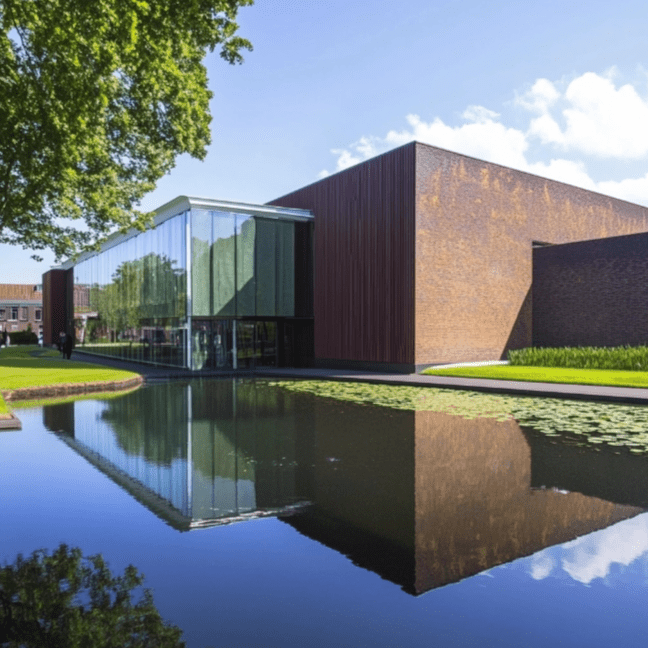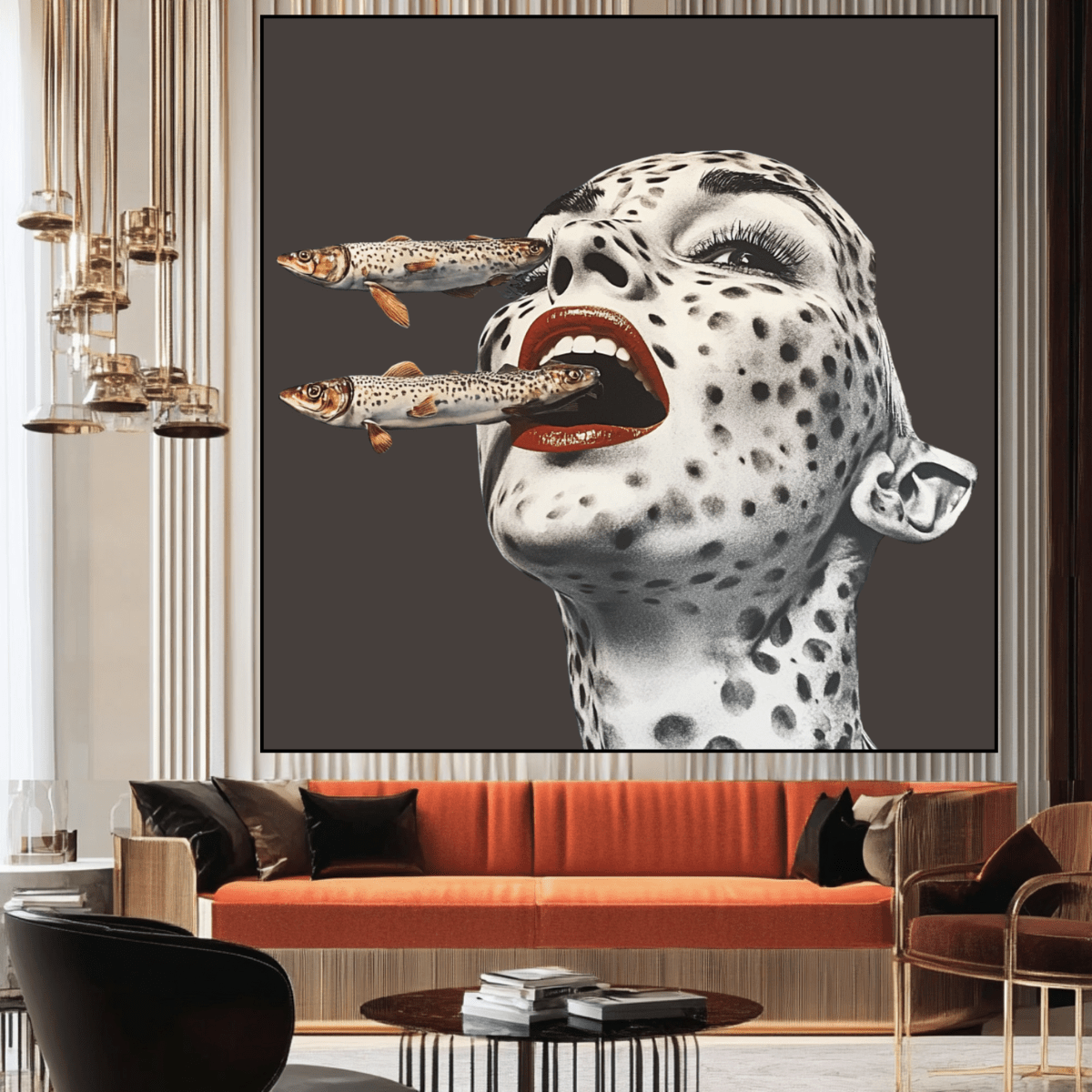Understanding Expressionism
Expressionism is an art movement that emerged in the early 20th century, characterized by the use of vivid colors, distorted forms, and an emphasis on representing subjective emotions. It defied the traditional norms of art to explore the depths of human emotion and inner experience. This movement was a radical departure from realism and impressionism, marking a significant turning point in modern art. Through the works of expressionist artists, the movement has left an indelible mark on the art world, inspiring generations of artists and continuing to resonate with audiences today.
What is Expressionism and How Did It Evolve as an Art Movement?
Origins of Expressionism: From Impressionism to Expressionism
The roots of expressionism can be traced back to the late 19th century, where it evolved as a reaction against the constraints of impressionism and realism. While impressionism focused on capturing the fleeting effects of light and color, expressionism sought to convey deeper emotional and psychological states. Influenced by artists such as Vincent van Gogh and Edvard Munch, expressionist painters used bold brushstrokes and bright colors to evoke immediate emotional responses. The movement gained momentum with the formation of groups like Die Brücke and Der Blaue Reiter, which played a pivotal role in shaping the direction and ideology of expressionism.
The Key Characteristics of Expressionist Artwork
Expressionist artwork is defined by its emotionally charged and expressive nature. This art style often features distorted figures and exaggerated forms, reflecting the artist's inner emotional state rather than realistic depictions. The use of color is particularly significant, with expressionist artists employing intense hues to heighten the emotional impact of their work. The brushstrokes are often vigorous and dynamic, conveying a sense of urgency and raw emotion. Themes of alienation, anxiety, and the human condition are prevalent, as artists sought to explore and express the complexities of the human psyche.
How Expressionism Influenced Modern Art
Expressionism has had a profound influence on modern art, paving the way for subsequent movements such as abstract expressionism. By prioritizing emotional expression over realistic representation, expressionist artists broke new ground in the exploration of art's potential. This shift in focus inspired modern artists to experiment with form, color, and technique, leading to the development of diverse art forms. The legacy of expressionism can be seen in the works of artists who continue to explore subjective emotions and inner experiences, ensuring the movement's relevance in contemporary art.
Who Are the Pioneers of Expressionism Art?
The Role of Egon Schiele in Expressionism
Egon Schiele, an Austrian expressionist painter, played a crucial role in the development of the expressionist movement. Known for his raw and emotionally intense depictions of the human figure, Schiele's work is characterized by a distinct style that emphasizes the fragility and vulnerability of the human condition. His use of distorted forms and expressive lines challenged conventional notions of beauty and art, making a significant impact on the expressionism art movement. Schiele's contribution to expressionism is celebrated for its bold exploration of human emotion and its influence on the direction of modern art.
Franz Marc: A Visionary Expressionist Artist
Franz Marc a founding member of the Der Blaue Reiter group, is renowned for his visionary approach to expressionism. His vibrant use of color and symbolic imagery set his work apart, as he sought to represent the spiritual and emotional essence of the natural world. Marc's paintings often feature animals, depicted in a way that reflects their spiritual significance. His innovative use of color and form made a lasting impression on the expressionist movement and continues to inspire artists today. Marc's work remains a testament to the power of art to convey profound emotional and spiritual experiences.
August Macke and His Contribution to Expressionism
August Macke was a key figure in the expressionism art movement, known for his dynamic compositions and use of color. As a member of the Der Blaue Reiter, Macke's work is characterized by its exploration of light and color, capturing the vibrancy of everyday life. His paintings often depict street scenes and figures, rendered with a sense of spontaneity and emotional depth. Macke's contribution to expressionism lies in his ability to merge the expressive potential of color with the depiction of modern life, creating works that resonate with viewers on an emotional level.
How Did Expressionism Differ from Other Art Styles?
Expressionism vs. Realism: A Comparative Study
Expressionism and realism represent two distinct approaches to art, differing fundamentally in their objectives and techniques. Realism focuses on accurate and detailed depictions of the physical world, emphasizing objective representation. In contrast, expressionism prioritizes the expression of subjective emotions and inner experiences, often distorting reality to convey deeper truths. Expressionist artists reject the constraints of realistic depictions, using exaggerated forms and colors to evoke emotional responses. This divergence highlights the transformative impact of expressionism on the art world, challenging traditional notions of beauty and representation.
The Distorted Emotions in Expressionist Art
One of the defining features of expressionist art is its focus on distorted emotions. Expressionist artists deliberately manipulate form and color to reflect their emotional state, often resulting in imagery that is unsettling yet profoundly moving. This distortion serves as a means of exploring the complexities of human emotion, allowing artists to communicate experiences that transcend verbal expression. By embracing distortion, expressionism offers a unique lens through which to view the world, challenging viewers to confront their own emotional responses and engage with the art on a deeper level.
From German Expressionists to Abstract Expressionism: The Evolution
The evolution of expressionism from its origins in German art to the emergence of abstract expressionism illustrates the enduring influence of the movement. German expressionists, such as those in the Die Brücke and Der Blaue Reiter groups, laid the groundwork for a new approach to art that prioritized emotional and psychological exploration. This approach was further developed in the mid-20th century by abstract expressionists, who expanded on the concepts of emotional expression and abstraction. The transition from German expressionism to abstract expressionism marks a significant progression in modern art, highlighting the movement's ongoing relevance and impact.
What Were the Influence and Impact of Expressionism on Modern Art?
A crowd admiring expressive artwork in a gallery setting.
The Legacy of Expressionist Artists in Contemporary Art
The legacy of expressionist artists is evident in the fabric of contemporary art, where the movement's emphasis on emotional depth and expressive potential continues to inspire modern artists. Expressionism's impact can be seen in the diverse range of art styles that prioritize subjective emotions and individual perspectives. Contemporary artists draw on the techniques and themes pioneered by expressionist artists, exploring new ways to convey the complexity of human experience. This ongoing influence ensures that expressionism remains a vital and dynamic force within the art world.
Expressionism’s Role in the Development of Abstract Expressionism
Expressionism played a crucial role in the development of abstract expressionism, a movement that emerged in the United States during the mid-20th century. Abstract expressionism built upon the principles of emotional expression and abstraction established by earlier expressionist artists. By embracing spontaneity and experimentation, abstract expressionists sought to capture the essence of emotion through bold, non-representational forms. This evolution demonstrates the lasting impact of expressionism on the trajectory of modern art, influencing the direction and scope of artistic exploration.
How German Expressionism Shaped 20th Century Art
German expressionism had a profound impact on the course of 20th century art, shaping the development of various art movements and influencing artists worldwide. The movement's emphasis on emotional expression and psychological depth resonated with artists seeking to explore new dimensions of artistic representation. German expressionist artists, such as Ernst Ludwig Kirchner and Wassily Kandinsky, pushed the boundaries of traditional art forms, paving the way for future innovations in abstract and modern art. The influence of German expressionism is evident in the works of artists who continue to explore themes of emotion, identity, and the human condition.
Why Are Expressionist Artists and Their Work Still Relevant Today?
The Emotional Depth of Expressionist Artworks
The enduring relevance of expressionist artworks lies in their profound emotional depth and ability to resonate with audiences across time. Expressionist artists capture the complexities of the human condition, using their art as a medium to explore themes of alienation, anxiety, and introspection. This exploration of emotion and inner experience continues to strike a chord with viewers, offering a window into the artist's psyche and inviting personal reflection. The emotional intensity of expressionist art ensures its continued significance in a world that values authenticity and emotional connection.
Expressionism's Influence on Modern Artists
Expressionism's influence on modern artists is evident in the continued exploration of emotional and psychological themes within contemporary art. Modern artists draw inspiration from the techniques and philosophies of expressionism, using their work to delve into personal and collective experiences. This influence is reflected in the diverse range of art styles that prioritize emotional expression and subjective perspectives. By embracing the principles of expressionism, modern artists contribute to a rich and evolving artistic landscape, ensuring the movement's continued relevance and impact.
The Timeless Appeal of Expressionist Paintings
The timeless appeal of expressionist paintings lies in their ability to transcend cultural and temporal boundaries, offering universal insights into the human experience. The expressive power of these works, combined with their innovative use of color and form, creates a lasting impact that continues to captivate audiences. Expressionist paintings invite viewers to engage with art on an emotional level, fostering a deeper appreciation for the complexities of human emotion and creativity. This enduring appeal ensures that expressionist art remains a vital and influential force within the art world, celebrated for its innovation and emotional resonance.
Enhance Your Space with Unique Modern Masterpieces - Rossetti Art
Are you inspired by the innovative mediums and conceptual depth highlighted in our exploration of contemporary art? You’re not alone! Today’s art enthusiasts are seeking cultural relevance and emotional connections in their artwork. However, finding pieces that resonate with modern themes and fit your unique style can be a challenge. That’s where we come in!
At Rossetti Art, we specialize in canvas prints, original paintings, and modern sculptures that celebrate the spirit of now. Each piece created by Chiara Rossetti brings a personal touch that connects deeply with current social narratives—just like the modern masterpieces discussed in the article. Don’t miss out on the chance to elevate your home decor with breathtaking artwork that speaks to your values and aesthetic. Explore our collection today and find your perfect piece! Act now, and transform your space into a gallery of inspiration!
FAQ
Q: What defines the expressionist style in art?
A: The expressionist style is characterized by its focus on representing the emotional state of the artist rather than depicting objective reality. This is often achieved through vivid use of color, dynamic brushwork, and distorted figures.
Q: Who were key figures in the expressionism movement?
A: Key figures in the expressionism movement include german artists like Oskar Kokoschka, Egon Schiele, and James Ensor. Groups such as Die Brücke and the Blue Rider also played significant roles.
Q: How did the German expressionist group Die Brücke influence the movement?
A: The German expressionist group Die Brücke was pivotal in the expressionism movement, emphasizing a break from traditional art forms and focusing on the expressive and emotional aspects of visual art. Their painting style often featured vibrant colors and bold brushwork.
Q: What is the significance of the Blue Rider group?
A: The Blue Rider group was significant for its abstract art and focus on spiritual and symbolic content. Artists within the group, such as Wassily Kandinsky and Franz Marc, sought to express inner feelings through the use of color and form.
Q: How did the First World War impact expressionism?
A: The First World War had a profound impact on expressionism, as many artists used their work to convey the emotional turmoil and trauma experienced during the war. This period saw a shift towards more somber tones and themes in their art.
Q: What is the connection between expressionism and fauvism?
A: Both expressionism and fauvism emphasize the use of vibrant colors and emotional expression. While fauvism focuses more on the use of color for color's sake, expressionism delves deeper into the emotional and psychological aspects of the artist's experience.
Q: How did artists like Oskar Kokoschka contribute to expressionism?
A: Artists such as Oskar Kokoschka contributed to expressionism through their unique approaches to painting, focusing on the emotional and psychological dimensions of their subjects. Kokoschka's expressive style and dynamic brushwork were influential in shaping the movement.
Q: What techniques are commonly used in expressionist painting?
A: Common techniques in expressionist painting include the use of vivid colors, dynamic and often exaggerated brushwork, and the distortion of figures to convey the artist's emotional state. Woodcut prints were also popular among expressionist artists.
Q: How did expressionism evolve into the neo-expressionist movement?
A: The neo-expressionist movement emerged in the late 20th century as a revival of expressionism's focus on emotive and subjective content. Artists in this movement continued to explore personal and emotional themes, often with a modern twist on traditional expressionist techniques.
Q: What role did figures in German expressionism play in the art world at the turn of the century?
A: Figures in German expressionism played a crucial role in challenging conventional art forms at the turn of the century. Their focus on the emotional and psychological aspects of art paved the way for future movements such as abstract art and influenced artists like Pablo Picasso and Marc Chagall.





Leave a comment
This site is protected by hCaptcha and the hCaptcha Privacy Policy and Terms of Service apply.